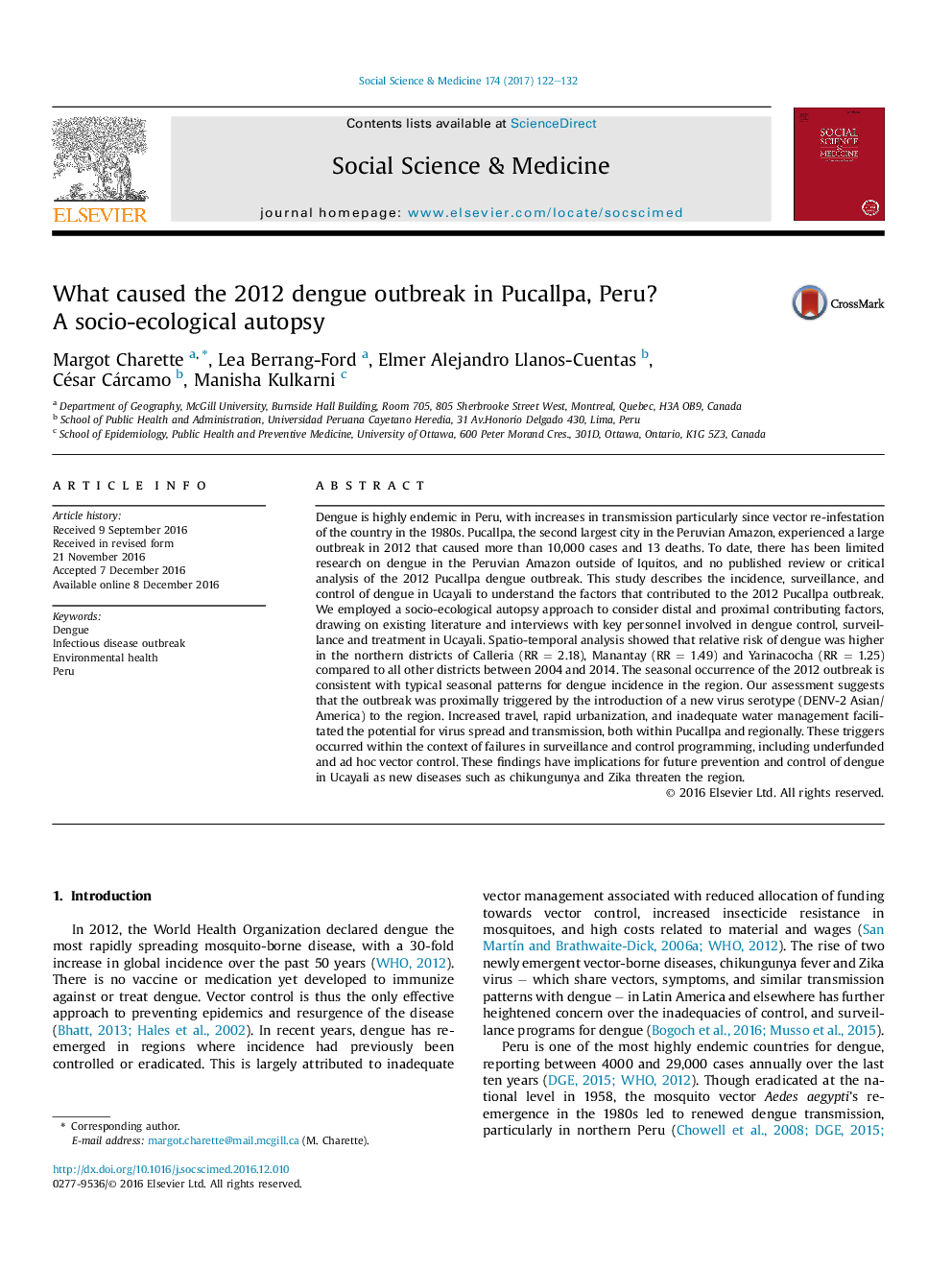| کد مقاله | کد نشریه | سال انتشار | مقاله انگلیسی | نسخه تمام متن |
|---|---|---|---|---|
| 5046819 | 1475995 | 2017 | 11 صفحه PDF | دانلود رایگان |

- Introduction of new DENV2 serotype in Pucallpa triggered the 2012 dengue outbreak.
- Proximal and distal drivers contributed to the incubation phase of the outbreak.
- Drivers include: rainy season, urbanization and inadequate water provision system.
- Under resourced surveillance and control allowed the outbreak to occur.
Dengue is highly endemic in Peru, with increases in transmission particularly since vector re-infestation of the country in the 1980s. Pucallpa, the second largest city in the Peruvian Amazon, experienced a large outbreak in 2012 that caused more than 10,000 cases and 13 deaths. To date, there has been limited research on dengue in the Peruvian Amazon outside of Iquitos, and no published review or critical analysis of the 2012 Pucallpa dengue outbreak. This study describes the incidence, surveillance, and control of dengue in Ucayali to understand the factors that contributed to the 2012 Pucallpa outbreak. We employed a socio-ecological autopsy approach to consider distal and proximal contributing factors, drawing on existing literature and interviews with key personnel involved in dengue control, surveillance and treatment in Ucayali. Spatio-temporal analysis showed that relative risk of dengue was higher in the northern districts of Calleria (RRÂ =Â 2.18), Manantay (RRÂ =Â 1.49) and Yarinacocha (RRÂ =Â 1.25) compared to all other districts between 2004 and 2014. The seasonal occurrence of the 2012 outbreak is consistent with typical seasonal patterns for dengue incidence in the region. Our assessment suggests that the outbreak was proximally triggered by the introduction of a new virus serotype (DENV-2 Asian/America) to the region. Increased travel, rapid urbanization, and inadequate water management facilitated the potential for virus spread and transmission, both within Pucallpa and regionally. These triggers occurred within the context of failures in surveillance and control programming, including underfunded and ad hoc vector control. These findings have implications for future prevention and control of dengue in Ucayali as new diseases such as chikungunya and Zika threaten the region.
Journal: Social Science & Medicine - Volume 174, February 2017, Pages 122-132